Papers by Marcin Białowarczuk
Polish archaeology in the Mediterranean, Dec 31, 2021
Arabian Archaeology and Epigraphy
Bahra 1 is a large site in the north of the Arabian Peninsula that provided an assemblage of near... more Bahra 1 is a large site in the north of the Arabian Peninsula that provided an assemblage of nearly 100,000 lithic artefacts. The whole lithic industry of Bahra 1 represents a set of well‐thought‐out flint, quartz and stone tools for the mass production of shell jewellery, with only a small share of typical household tools. They mostly relate to the Ubaid tradition with Arabian Neolithic influences. However, limited excavations of the oldest occupational layers of the site also revealed an Epipalaeolithic Zarzian tradition. This paper presents a techno‐typological, functional and cultural characteristic of the whole Bahra 1 chipped and ground stone industry identified during the excavations at the site in 2009–2019.
Arabian Archaeology and Epigraphy, 2023
Bahra 1 is a large site in the north of the Arabian Peninsula that provided an
assemblage of near... more Bahra 1 is a large site in the north of the Arabian Peninsula that provided an
assemblage of nearly 100,000 lithic artefacts. The whole lithic industry of
Bahra 1 represents a set of well‐thought‐out flint, quartz and stone tools for
the mass production of shell jewellery, with only a small share of typical
household tools. They mostly relate to the Ubaid tradition with Arabian
Neolithic influences. However, limited excavations of the oldest occupational
layers of the site also revealed an Epipalaeolithic Zarzian tradition. This paper
presents a techno‐typological, functional and cultural characteristic of the
whole Bahra 1 chipped and ground stone industry identified during the
excavations at the site in 2009–2019.
Arabian Archaeology and Epigraphy, Jan 30, 2023
Polish archaeology in the Mediterranean, 2010

Paleobiology, 2015
The Bahra 1 archaeological site in Kuwait is an interesting example of an Ubaid-related settlemen... more The Bahra 1 archaeological site in Kuwait is an interesting example of an Ubaid-related settlement specialized in the manufacture of shell adornments. Almost all the lithics discovered at the site are strongly related to this specialization. The lack of flint outcrops in the neighborhood of the site determined the use of diverse other stone materials. Quartz played an important role, exceeding 25% of the material set, but its specific properties make this stone extremely difficult to analyze. The best way is to carry out knapping experiments in order not only to better understand fracture mechanics of this specific material, but also to establish framework criteria for analyzing archaeological quartz remains. A typology of the quartz assemblage from Bahra 1 is presented in this article and a reconstruction of the exploitation method based on experimental archaeology, altogether with a preliminary interpretation of the role of quartz artifacts in the lithic industries at the site.
Stories told around the fountain. Papers offered to Piotr Bieliński on the occasion of his 70th birthday, 2019
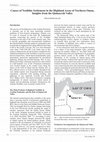
The process of Neolithisation of the Arabian Peninsula is currently one of the most interesting r... more The process of Neolithisation of the Arabian Peninsula is currently one of the most interesting research problems of Near Eastern archaeology. Despite over 35 years of research in this fi eld, the fundamental question concerning the genesis of the Neolithic transition in this part of the world remains open. Due to specifi c geographic and environmental conditions the transformation of hunter-gatherer communities into food producers happened here along diff erent lines than it did in the Fertile Crescent. The over four thousand years long (7100-3100 BC) Late Stone Age in this region is characteristic for the peculiar (compared to the traditional defi nition of the Neolithic) economic system that developed here, which based predominantly upon pastoralism, intensively supplemented by specialized gathering, fi shing and seasonal hunting. This, in turn, infl uenced human settlement preferences and resulted in a half-nomadic way of life. Permanent settlements were located mainly in the co...

Polish Archaeology in the Mediterranean
This paper reports briefly on the results of a short reconnaissance at the site of Qumayrah–Ayn 2... more This paper reports briefly on the results of a short reconnaissance at the site of Qumayrah–Ayn 2 (QA 2), a new prehistoric site located in a poorly studied part of the Qumayrah Valley in northern Oman. A survey and limited probing by the Omani–Polish Qumayrah Archaeological Project confirmed the presence of a sediment, approximately 15–20 cm thick, which yielded not just lithics, but also stone installations discovered in situ. One of these installations was evidently a hearth, the other a kind of platform. The lithic assemblage is characterized by a prevalence of flake technology with rare blade products. Predominant in the tools group are side-scrapers, notches and perforators produced by direct-scaled retouch. The most characteristic tools are tanged projectile points made on flakes. The main problem is contextualizing these materials. On the grounds of certain premises they may be associated with the Fasad technocomplex, but not necessarily the pre-Neolithic one as is the case ...
Arabian Archaeology and Epigraphy
Polish Archaeology in the Mediterranean
In the second field season of the Omani–Polish Qumayrah Archaeological Project, the prehistoric l... more In the second field season of the Omani–Polish Qumayrah Archaeological Project, the prehistoric leg of the team conducted investigations of previously discovered lithic sites in the vicinity of Al-Ayn village. This paper summarizes the results of archaeological testing at three open campsites codenamed Qumayrah-Ayn (QA) 2, QA 6 and QA 12. The investigations provided new evidence of intensive Stone Age settlement of the Qumayrah Valley (also known as Wadi Fajj). The data, comprising lithic tools and some shell and stone beads, indicate that the occupation of these sites should be dated to various stages of the Neolithic period.

Polish Archaeology in the Mediterranean
Transformation of the plan seems to be one of the most fundamental characteristics of architectur... more Transformation of the plan seems to be one of the most fundamental characteristics of architectural evolution during the PPNA stage. It starts with simple round monocellular structures and ends with the invention of modular subrectangular ones, divided into many rooms. However, the evolution of some types of buildings in different regions of the Fertile Crescent was varied in pace. A major question are the main factors causing such regional differences. This paper presents a basic typology of early Neolithic structures and their regional diversification, which could result from individual dynamics of the development of original types stimulated by regionally invented practical and technical solutions. Two variants of the process were distinguished. The first is the evolution from a primitive shelter to open, free-standing durable forms of round houses. The other variant was the development from shelters to large round subterranean houses. Different regions of the Near East adopted o...

Proceedings of the Seminar for Arabian Studies, 2019
This paper concerns the prehistoric part of a project run by the Polish Centre of Mediterranean A... more This paper concerns the prehistoric part of a project run by the Polish Centre of Mediterranean Archaeology and the Ministry of Heritage and Culture of Oman, in the micro-region of Qumayrah. The project, instigated in 2016, includes a survey, testing, and excavations of selected sites. During two seasons of investigations, archaeological sites of varied chronology were recorded, three of which were attested to late Stone Age occupation. The largest site (QA 2), although deflated, yielded a rich collection of lithics found in the context of a stone hearth, a platform, and the remains of a shelter. The lithics included simple tools produced by direct-scaled retouch, rare tanged projectile points made on flakes, and bifacial foliated pieces. Tubular beads of stone and shell (including Akab-type beads), and worked seashells, attest to connections with coastal regions. The two other sites (QA 6 and QA 12) are less well preserved, but surface collection and limited testing yielded lithic collections, including tanged spear points. At this stage, techno-typological analysis of materials is the only means of establishing a chronology of these sites. However, new information from this region of Oman is significant considering the disproportion between the state of research at coastal areas and inland territories.
Polish Archaeology in the Mediterranean , 2018
In the second field season of the Omani-Polish Qumayrah Archaeological Project, the prehistoric l... more In the second field season of the Omani-Polish Qumayrah Archaeological Project, the prehistoric leg of the team conducted investigations of previously discovered lithic sites in the vicinity of Al-Ayn village. This paper summarizes the results of archaeological testing at three open campsites codenamed Qumayrah-Ayn (QA) 2, QA 6 and QA 12. The investigations provided new evidence of intensive Stone Age settlement of the Qumayrah Valley (also known as Wadi Fajj). The data, comprising lithic tools and some shell and stone beads, indicate that the occupation of these sites should be dated to various stages of the Neolithic period.

This paper reports briefly on the results of a short reconnaissance at the site of Qumayrah– Ayn ... more This paper reports briefly on the results of a short reconnaissance at the site of Qumayrah– Ayn 2 (QA 2), a new prehistoric site located in a poorly studied part of the Qumayrah Valley in northern Oman. A survey and limited probing by the Omani–Polish Qumayrah Archaeological Project confirmed the presence of a sediment, approximately 15–20 cm thick, which yielded not just lithics, but also stone installations discovered in situ. One of these installations was evidently a hearth, the other a kind of platform. The lithic assemblage is characterized by a prevalence of flake technology with rare blade products. Predominant in the tools group are side-scrapers, notches and perforators produced by direct-scaled retouch. The most characteristic tools are tanged projectile points made on flakes. The main problem is contextualizing these materials. On the grounds of certain premises they may be associated with the Fasad technocomplex, but not necessarily the pre-Neolithic one as is the case of the classic types. However, a much later chronology is also quite possible.
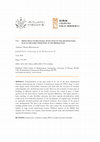
Transformation of the plan seems to be one of the most fundamental elements characterizing the ev... more Transformation of the plan seems to be one of the most fundamental elements characterizing the evolution of architecture during the PPNA stage. It starts with simple round monocellular structures and ends with the invention of modular subrectangular ones, divided into many rooms. However, the evolution of some types of buildings in different regions of the Fertile Crescent was varied in pace. A major question are the main factors causing such regional differences. This paper presents a basic typology of early Neolithic structures and their regional diversification, which could result from individual dynamics of the development of original types stimulated by regionally invented practical and technical solutions. Two variants of the process were distinguished. The first is the evolution from a primitive shelter to open, free-standing durable forms of round houses. The other variant was the development from shelters to large round subterranean houses. Different regions of the Middle East adopted one of these two variants. Each featured specific traits and determined further regional development of plan.
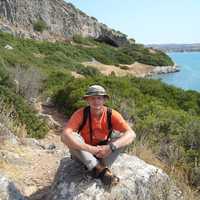



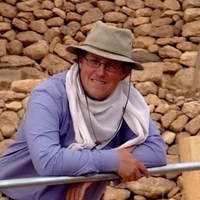
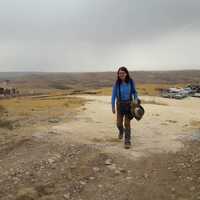


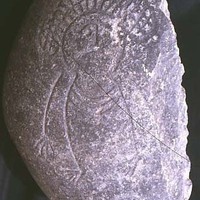

Uploads
Papers by Marcin Białowarczuk
assemblage of nearly 100,000 lithic artefacts. The whole lithic industry of
Bahra 1 represents a set of well‐thought‐out flint, quartz and stone tools for
the mass production of shell jewellery, with only a small share of typical
household tools. They mostly relate to the Ubaid tradition with Arabian
Neolithic influences. However, limited excavations of the oldest occupational
layers of the site also revealed an Epipalaeolithic Zarzian tradition. This paper
presents a techno‐typological, functional and cultural characteristic of the
whole Bahra 1 chipped and ground stone industry identified during the
excavations at the site in 2009–2019.
assemblage of nearly 100,000 lithic artefacts. The whole lithic industry of
Bahra 1 represents a set of well‐thought‐out flint, quartz and stone tools for
the mass production of shell jewellery, with only a small share of typical
household tools. They mostly relate to the Ubaid tradition with Arabian
Neolithic influences. However, limited excavations of the oldest occupational
layers of the site also revealed an Epipalaeolithic Zarzian tradition. This paper
presents a techno‐typological, functional and cultural characteristic of the
whole Bahra 1 chipped and ground stone industry identified during the
excavations at the site in 2009–2019.